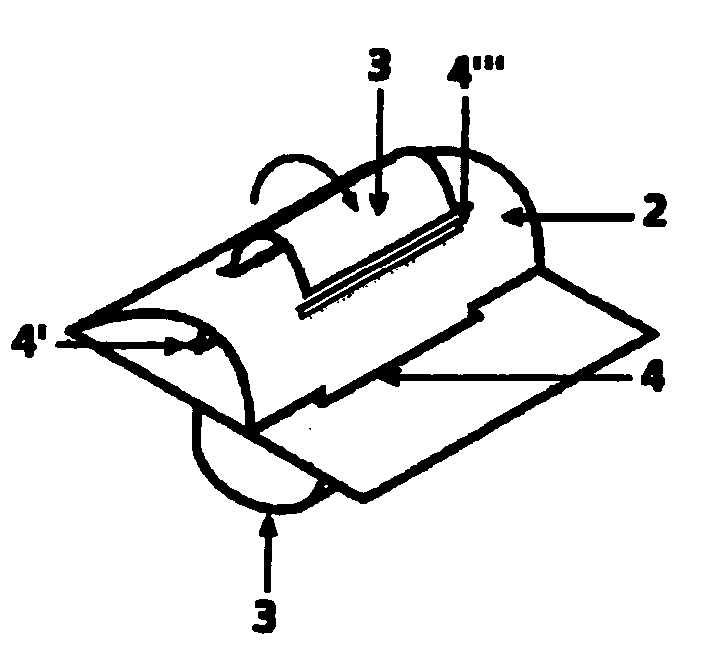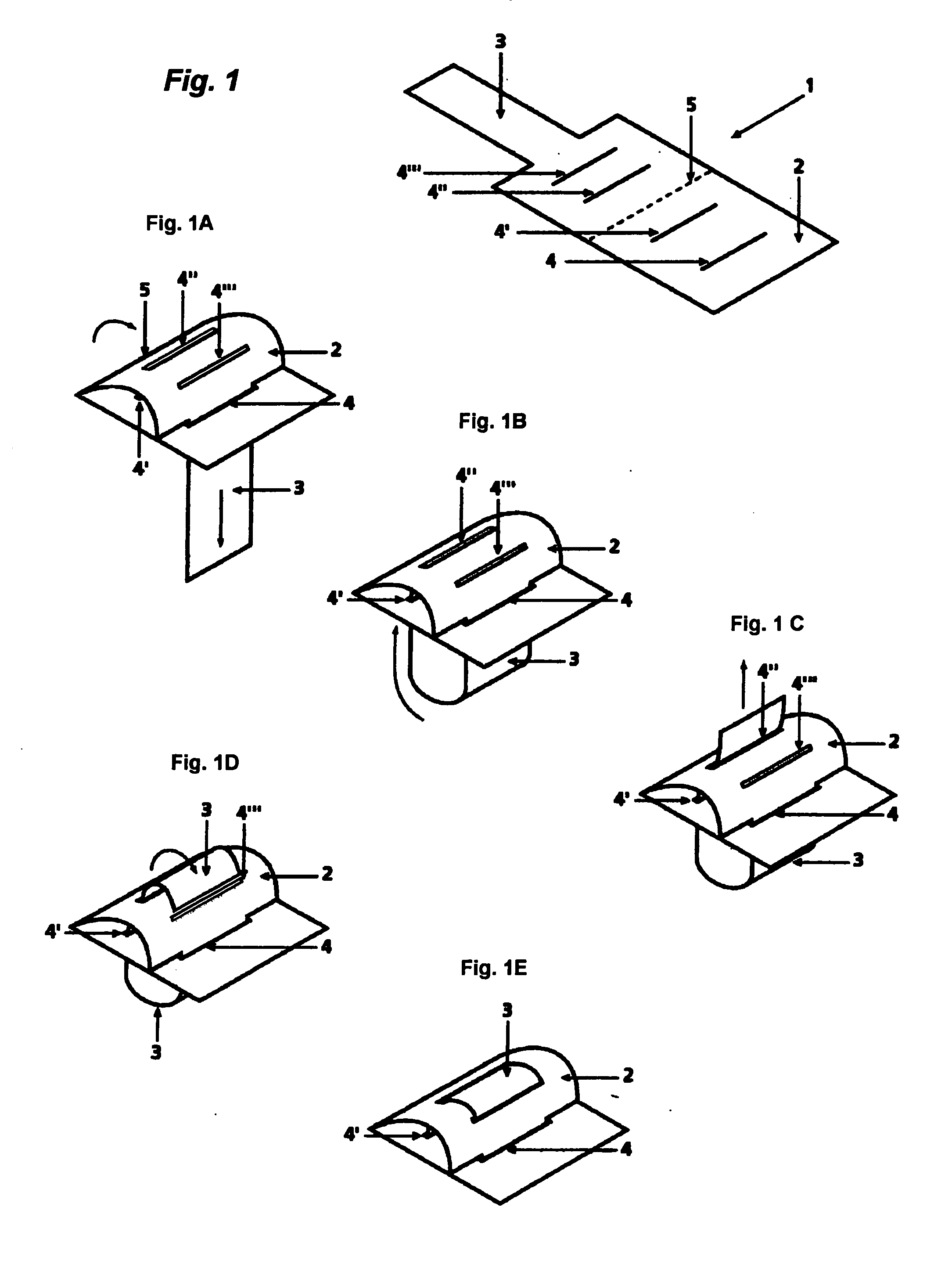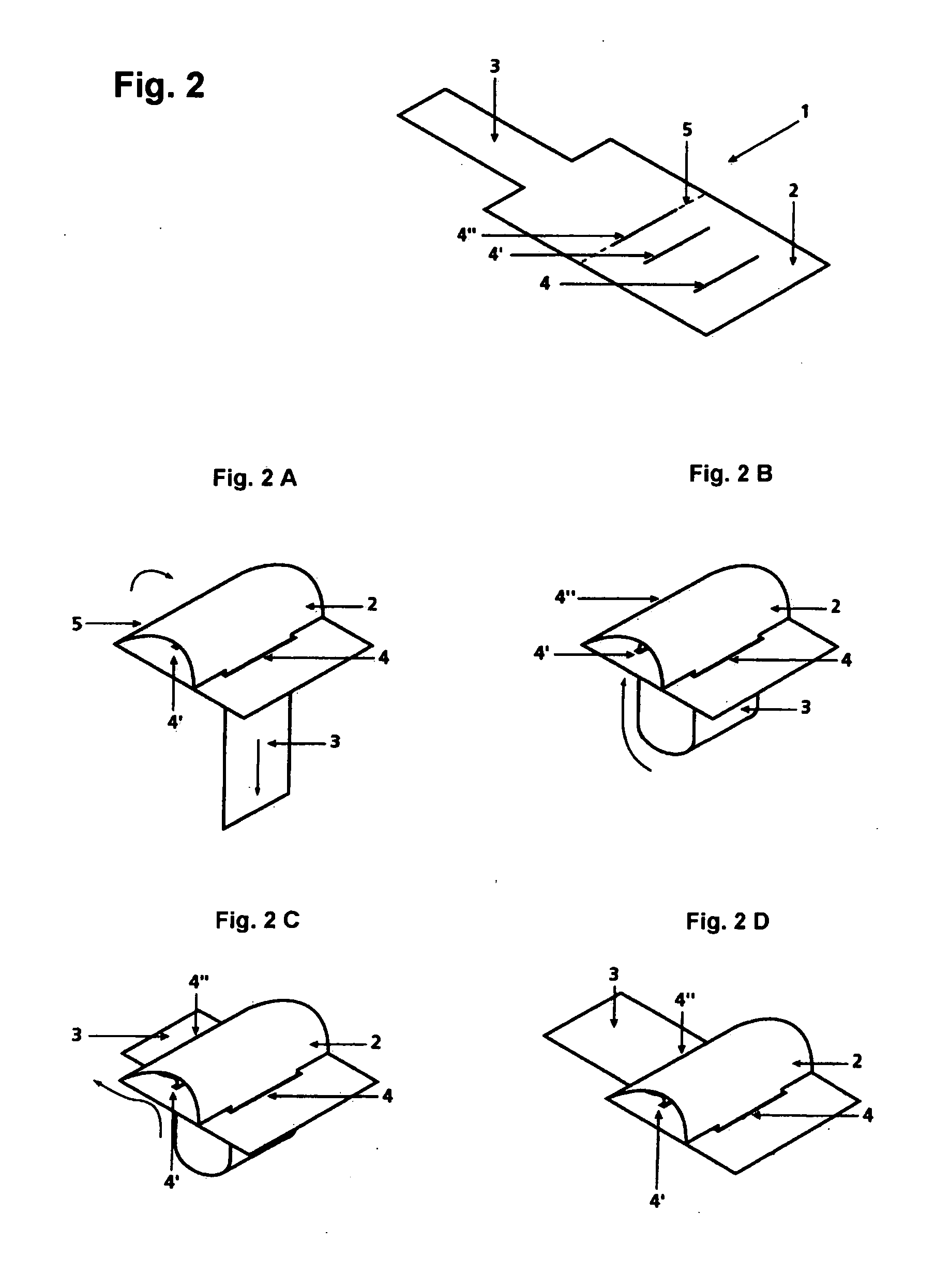System of forming three-dimensional figures from a laminar material
a technology of laminar material and three-dimensional figures, applied in the field of entertainment three-dimensional figures production system, can solve the problems of figure deformation, consumption, and inability to develop rounded parts
- Summary
- Abstract
- Description
- Claims
- Application Information
AI Technical Summary
Benefits of technology
Problems solved by technology
Method used
Image
Examples
example 1
[0025]FIG. 1 shows a sheet piece 1 having a major segment or body 2, and a tab 3 created unitary to the body and slots 4, 4′, 4″4′″ shaped in the body, as well as point of inflection 5, which may be indicated by means of a dotted line, die-cut or similar and which divides body 2 into a front portion and a rear portion.
[0026] In accordance with the principles of the invention, in the example of FIG. 1, tab 3 initially passes through slot 4, at the same time that a crease is accomplished in point 5, as indicated in FIG. 1A, conducting this way the rear portion of body 2 to an upper plane, producing a bulkiness. Immediately, as it is appreciated in FIG. 1B, tab 3 passes through slot 4′ and later on through slots 4″ and 4′″ (FIGS. 1C and 1D), producing a second bulkiness over the first one, as illustrated in FIG. 1E.
example 2
[0027]FIG. 2, just as in the example of FIG. 1, has arranged a body 2 with a tab 3, a point of inflection 5 and two slots 4 and 4′, but above the point of inflection, there is a slot 4″ set. The process of assembly in likewise similar to example 1 in its first two steps (FIGS. 2A and 2B), where tab 3 passes through slots 4 and 4′ and accomplishing a crease at point of inflection, 5, developing the rear portion of body 2 a bulkiness in the upper part, but in this case, as it is appreciated in FIG. 2C, the tab is passed afterwards through slot 4″ located at the point of inflection 5, ending in the rear portion of the body, developing only one bulkiness and leading the tab to come into being an element of the figure's rear portion.
example 3
[0028] In the example illustrated in FIG. 3, there are provided two tabs 3 and 3′, in the rear and front ends of the body, respectively, a point of inflection 5, a second point of inflection 6 disposed in tab 3′ and three slots 4, 4′ and 4″ disposed in the front portion of body 2. Just as in the previous examples, as FIG. 3A shows, tab 3 passes through slot 4 accomplishing a crease at point of inflection 5, developing the rear portion of body 2 a bulkiness in the upper part. Afterwards, tab 3 passes through slots 4′ and 4″, achieving this way the development of a bulkiness in the lower part of the body (FIGS. 3B and 3C). FIGS. 3C and 3D, likewise show that tab 3′ folds at point of inflection 6 upwardly, in order to pass through slot 4, to develop a bulkiness in the front part of the figure.
PUM
 Login to View More
Login to View More Abstract
Description
Claims
Application Information
 Login to View More
Login to View More - R&D
- Intellectual Property
- Life Sciences
- Materials
- Tech Scout
- Unparalleled Data Quality
- Higher Quality Content
- 60% Fewer Hallucinations
Browse by: Latest US Patents, China's latest patents, Technical Efficacy Thesaurus, Application Domain, Technology Topic, Popular Technical Reports.
© 2025 PatSnap. All rights reserved.Legal|Privacy policy|Modern Slavery Act Transparency Statement|Sitemap|About US| Contact US: help@patsnap.com



